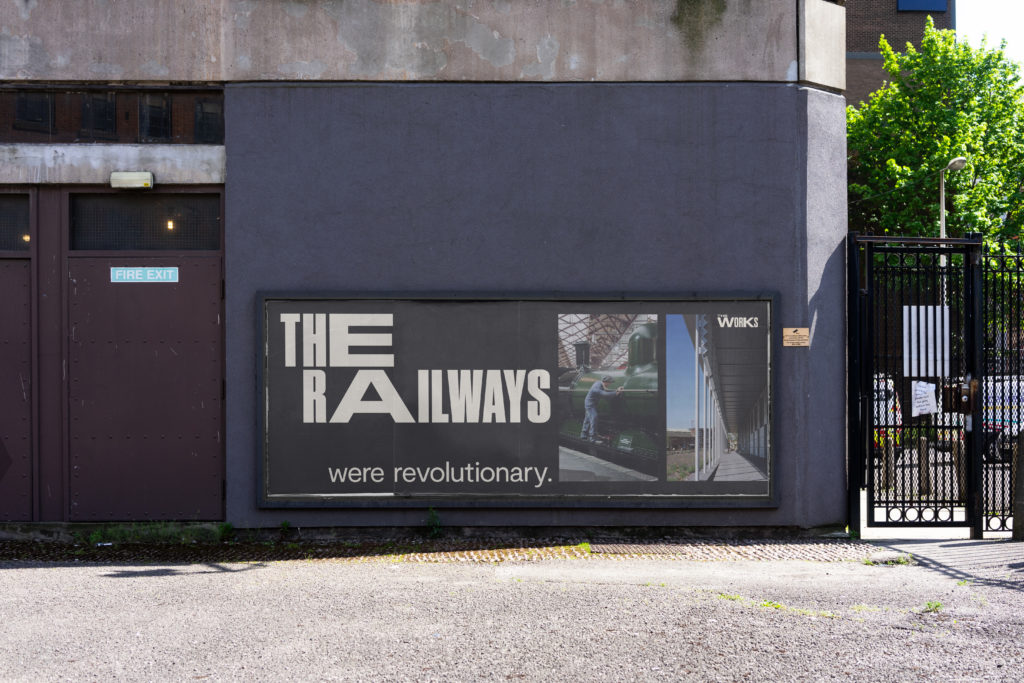This was an interesting one for our team. Between ourselves and our friends at CTConsults, we have plenty of experience in place brands for whole towns or cities. We have experience in creating place brands for places that don’t exist yet, and for places with lengthy histories. We’d worked on heritage projects and Action Zone strategies. But we’d never produced a place brand and name for an existing limited area of a town; never branded a little part of a whole, and examined the way that a zone or a quarter interacts with its wider place from a brand perspective.
What does it offer to the wider area, and what does it need from it? In this kind of symbiotic relationship between places, how can the brand-guided actions of the smaller zone provide benefits that reach wider than its geographical boundaries?
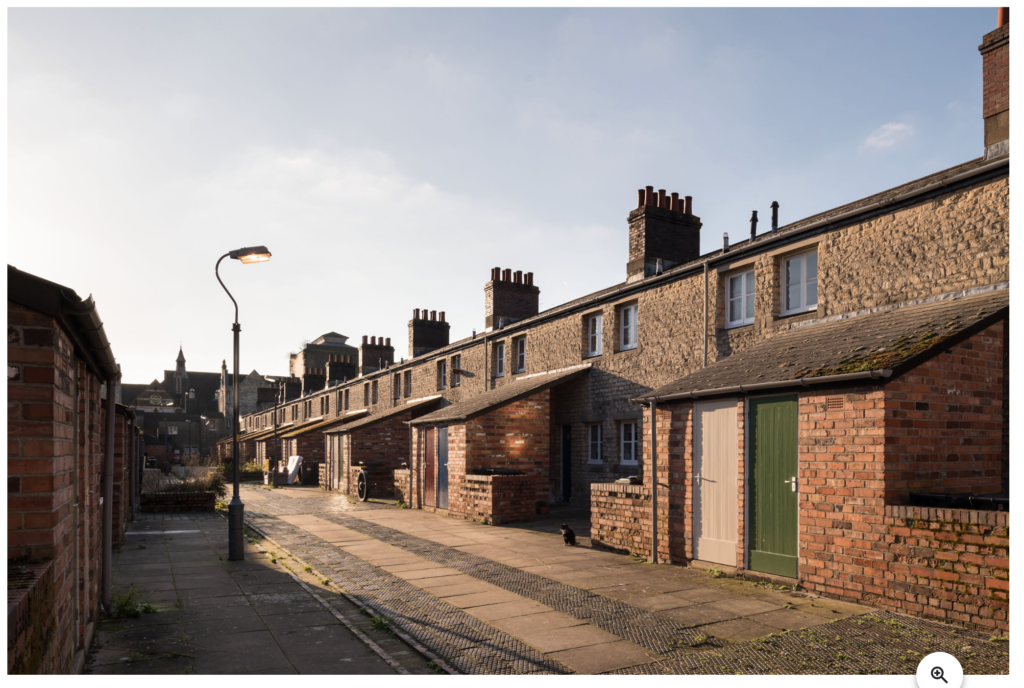
The area has an incredible industrial history focused on railway engineering – something we’re very familiar with from our projects in York and Crewe to name a few – and was one of the largest industrial complexes in the world in its time. It’s still home to the GWR headquarters and STEAM – the GWR Museum, but its heritage credentials go beyond the railways – the National Trust, English Heritage and Historic England all have their national headquarters on site.
When you walk around the area, which crosses two sides of the railway with trains speeding between London and Swansea, it’s primarily a mix of industrial and residential – warehouses with zigzag roofs, sympathetic new builds and original terraced houses. The picturesque Railway Village built by Brunel for his workers in the 19th century is a brilliantly preserved vignette of life for Brunel’s engineers and their families, and makes you wonder if the people getting up every day and heading to their work sheds knew that they were part of a technological revolution; their daily grind part of an era that would completely change the world. In the centre of the village is the soon-to-be regenerated Mechanics Institute, built as the social and community centre for the workers and the Health Hydro which provided them with baths, medical services and dentistry. On the other side of the tracks are original industrial sheds alongside new housing and workspace, as well as an outlet shopping centre in the renovated GWR works.
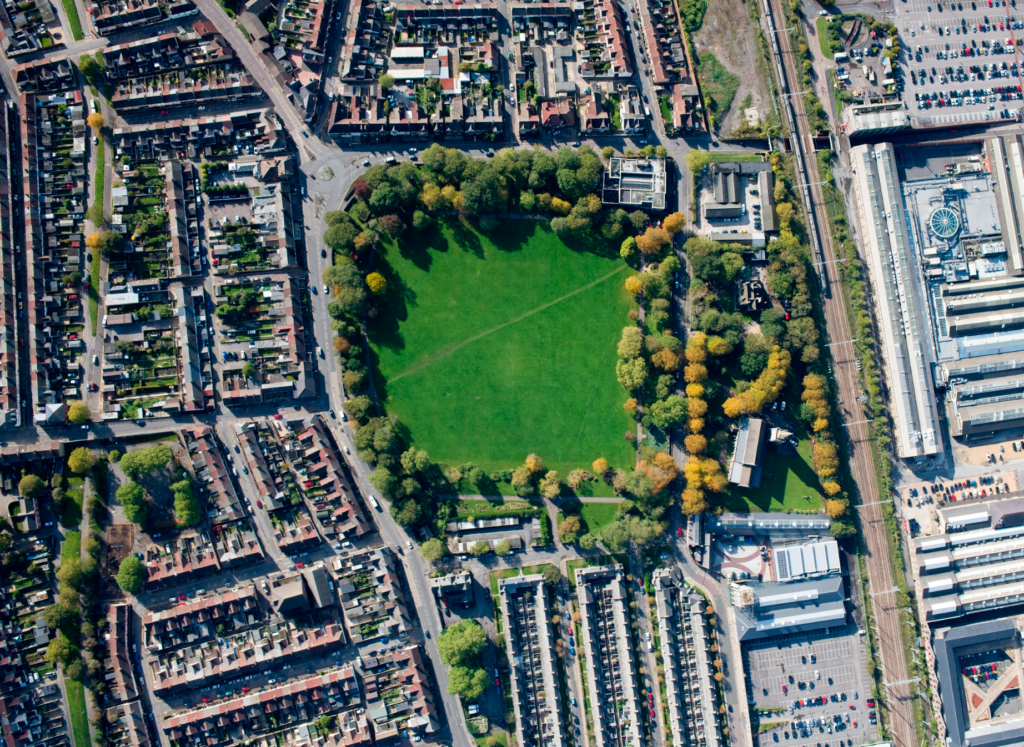
We designed an engagement strategy to capture public as well as stakeholder views and began our listening exercise. What we found was pride in a place with a history of building things from the ground up – for Brunel and Gooch this was a housing estate as well as an entire railway industry. We heard stories emerging about a place with a history of social progress, with much-repeated rumours of the Railway Village (with its baths, medical centre, social support and community centre all located next to housing and workplace) being the original inspiration for the NHS – demonstrating that wellbeing, health and happiness was essential to a successful economy. It doesn’t matter whether the story is true because this area was still definitely part of pioneering a new approach to health and social care. Locals are proud of their place being one of the originators of social housing, proud of the history of building things and solving problems through design, engineering and ingenuity. This neighbourhood also had the first public lending library in the UK – for the betterment of the people at a time when education was a privilege of the wealthy.
Continuing on the education and learning thread there’s multiple FE and HE opportunities on site as well as the Royal Agricultural University’s recently launched Cultural Heritage Institute, University of Bath Innovation Centre for Applied Sustainable Technologies and Swindon UTC.
Add to this the national headquarters mentioned previously, plus the UK Space Agency, Innovate UK and Research Councils UK all just a few minutes up the road and the amount of knowledge and thought leadership contained in a small radius is truly impressive.
Put this all together, and you get a place that doesn’t just specialise in engineering, imagination and real innovation but exports it too; thought leadership here affects decision making across the country and the rest of the world. Linked to that is the idea of social responsibility and grassroots action – a place that led the way by valuing its people as much as their outputs, and still does to this day. All this is happening across a site that’s physically disjointed, but working hard to become united. Crossing the tracks, crossing sectors, crossing centuries – even if this wasn’t about railway heritage it would be hard to avoid bridge metaphors. You can read the final articulation of these place brand values here.
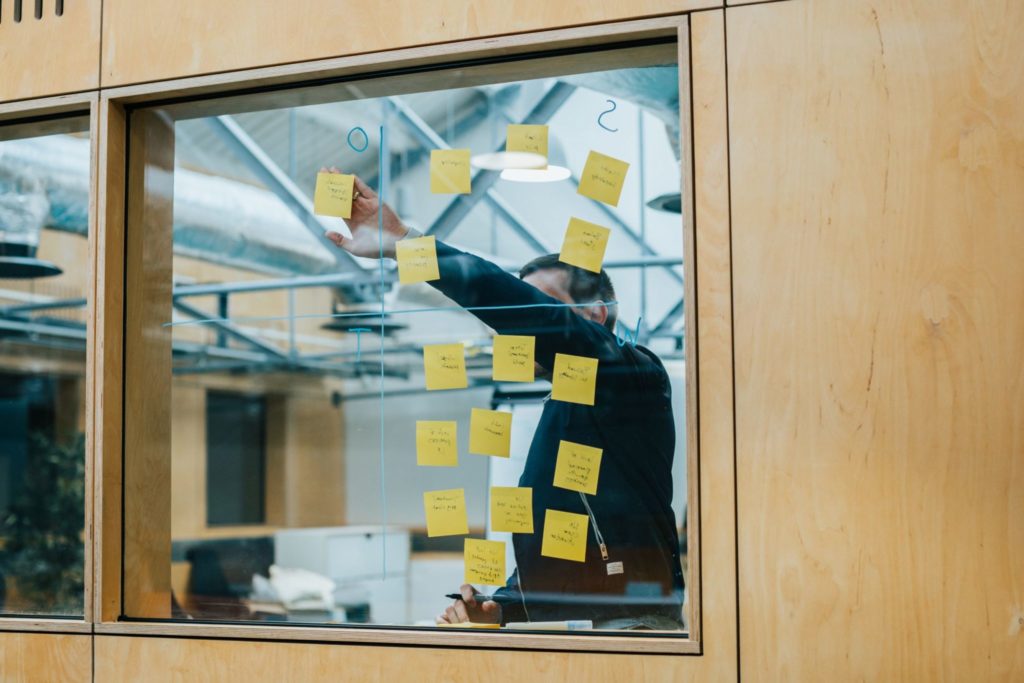
We worked with a stakeholder group to co-design the place values, and then moved on to naming the site. Once the Heritage Action Zone project finishes in 2024 it’s important that this corner of Swindon still has its own clear identity, and a name and visuals can do a lot of that work. After workshops and discussions, together we landed on a simple answer – ‘The Works’.
The Works combines the legacy name with a variety of modern meanings and the idea of a place that’s about activity, productivity, action. In this way ‘works’ covers entertainment and leisure uses as well as the more explicit heritage and engineering references. We added the descriptor line ‘Swindon’s home for heritage, knowledge and big ideas’ to be used for the first few years of implementation while the place needs to work hard to build brand recognition.

Next up, a visual identity that just like the place, takes heritage inspiration and updates it with a truly future-facing feel.
The bold logomark can be seen as a statement of intent – asserting that this place is ambitious and productive. Individual letters can stretch or compress to evoke a sense of movement and adaptability – a flexibility and reactivity to reflect the skill and attitude of the site’s engineers who used creative problem solving to drive productivity and innovation.
The colour palette works to unify all areas of The Works site – bringing together the limestone of the Railway Village, the green of the outside spaces, brick of the warehouses, yellow lime to represent modern developments, the blue of water and steam and all underpinned by charcoal instead of a traditional black as the fuel for everything that’s happened here.
Layouts use layers of image, block colour and different typefaces to reflect the spirit of collaboration in The Works – where different pieces of the puzzle come together to form something that’s more than the sum of its parts. An emphasis on photography as a primary communication device puts a focus on the people and places that make The Works what it is.
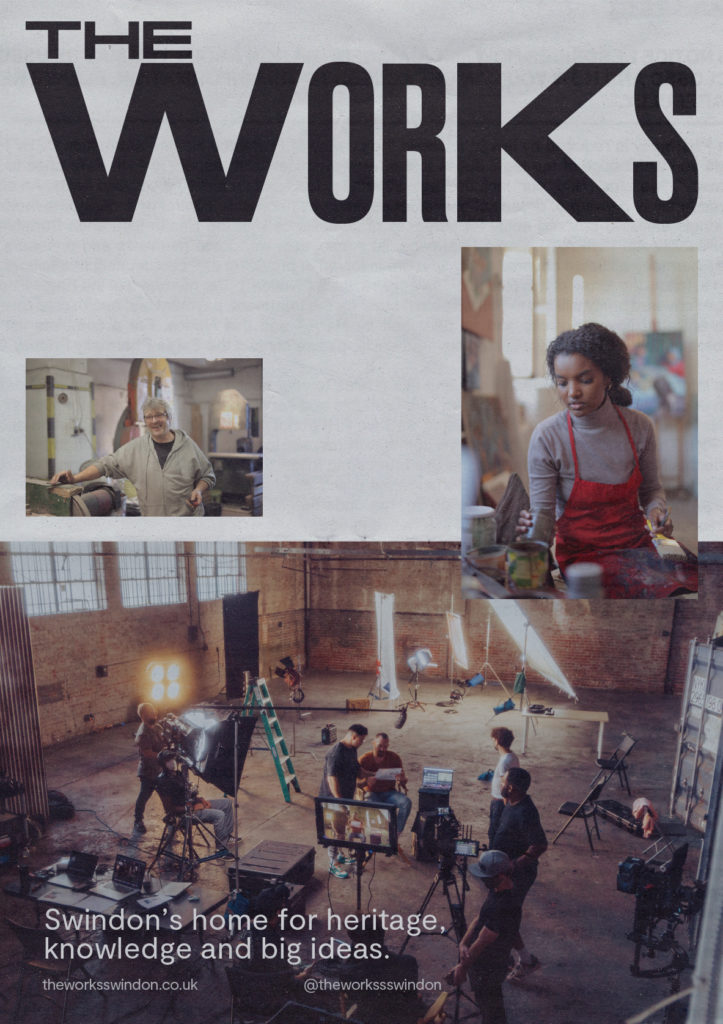
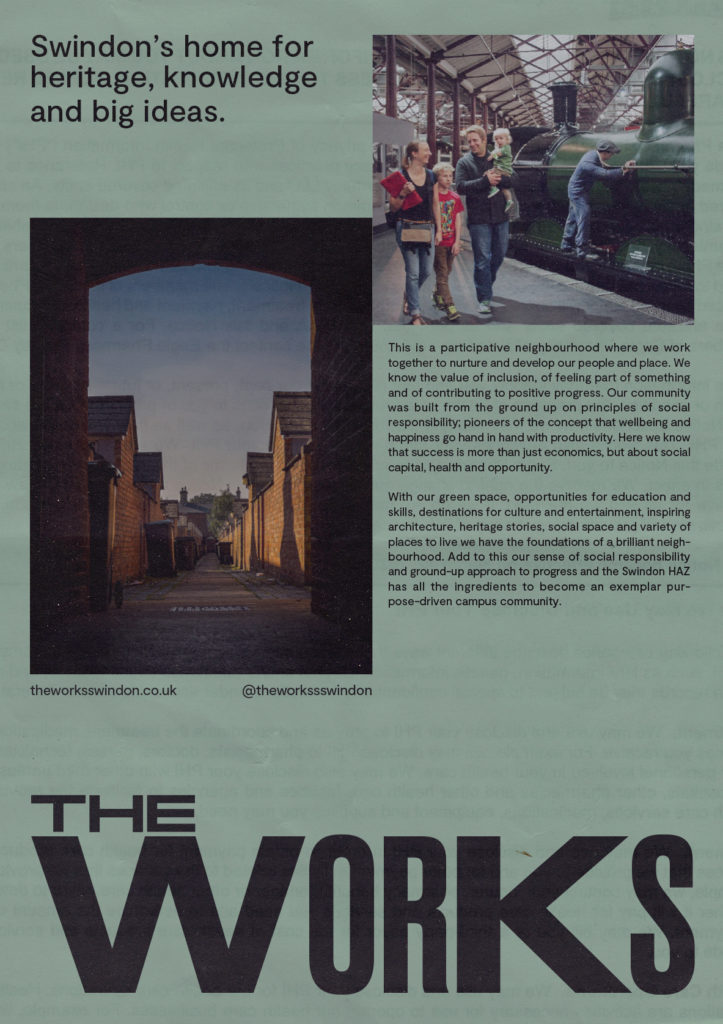
As of December 2022 our role in the project is officially over, but we’re excited to see what happens for the remainder of the HAZ funding and beyond and hopefully we can get involved in something else there in the future.
